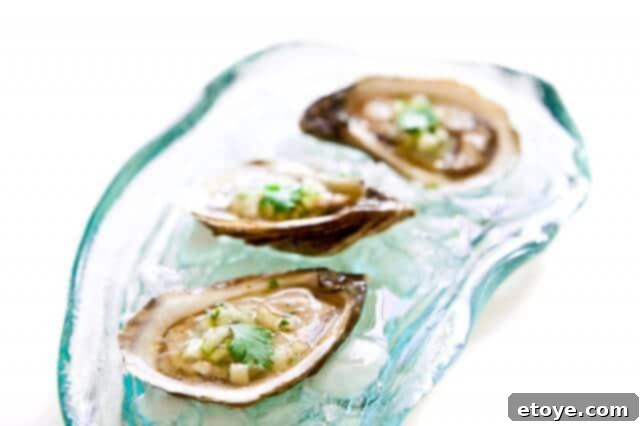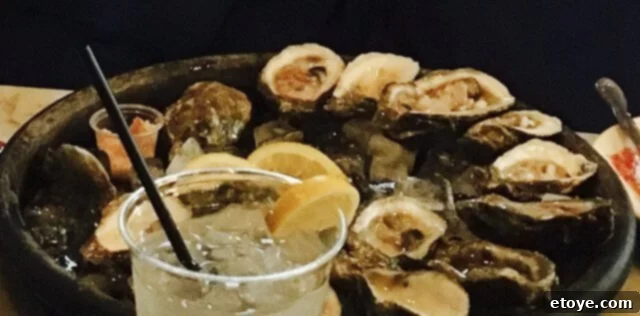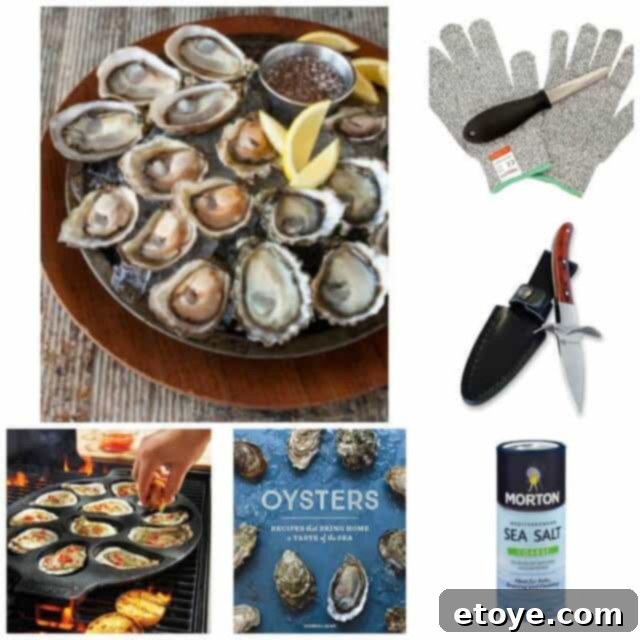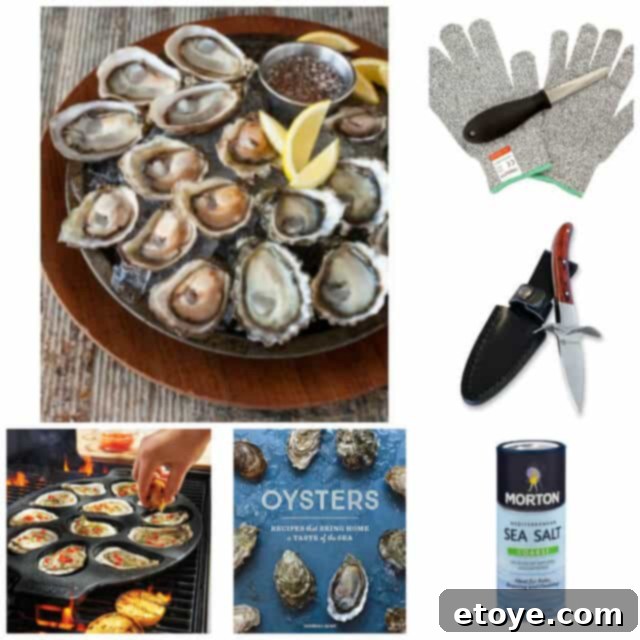
New Orleans, a city synonymous with vibrant culture, soulful music, and a culinary scene unlike any other, recently called to me with an irresistible siren song. On a whim, my marketing associate, Crystal, and I embarked on an exhilarating 48-hour gastronomic adventure to this iconic destination, driven by a singular obsession: oysters. Our journey was meticulously planned around four essential culinary stops, each promising a unique and unforgettable oyster experience that would redefine our appreciation for this bivalve delicacy.
Our carefully curated itinerary included:
- Meril: Emeril Lagasse’s innovative new restaurant, proudly named after his daughter. We were eager to experience its contemporary take on classic flavors.
- Acme Oyster House: Widely celebrated as New Orleans’ most iconic oyster establishment, a true institution we couldn’t miss.
- Royal Oyster House: Formerly known as Tortorici’s, this historic spot boasted a legendary past, having been a favorite haunt of luminaries like Frank Sinatra and Dean Martin. Its timeless charm and reputation for quality were alluring.
- A special pop-up event hosted by the acclaimed Chef Nina Compton in collaboration with Morton Salt’s Next Door Chef series, offering a unique opportunity to witness culinary innovation firsthand.
As we navigated the bustling streets and savored the distinct atmosphere of each locale, one common thread inextricably linked our diverse dining experiences: the magnificent oyster. From raw indulgence to perfectly cooked preparations, oysters were the undeniable stars of our New Orleans escapade, promising a sensory journey that delved deep into their briny essence.
Our first stop, Meril, introduced us to a sophisticated twist on oyster preparation. Here, we delighted in succulent wood-fire roasted oysters. This method imparted a subtle smokiness and a tender texture, elevating the oyster’s natural sweetness without overpowering its delicate marine flavor. Each bite was a revelation, showcasing how innovative culinary techniques could transform a simple ingredient into a gourmet masterpiece. The ambiance at Meril, with its modern yet inviting decor, perfectly complemented the refined dishes, setting a high bar for our oyster pilgrimage.

Next, we immersed ourselves in the legendary atmosphere of Acme Oyster House. This place is a true New Orleans landmark, famous for its lively oyster bar. We secured our spots, eager to witness the theatrical skill of the shuckers. While our specific shuckers seemed to be in their own world, the sheer energy of the place was infectious. Sitting at the bar, observing the non-stop shucking, is an experience in itself. The fresh, cold, raw oysters served straight from the shell were pure perfection – a pristine taste of the Gulf, saline and utterly refreshing. It was here that we truly embraced the simple, unadulterated joy of raw oysters.

Beyond their famous raw offerings, Acme also excels in another New Orleans staple: char-grilled oysters. These culinary treasures arrived bubbling hot, drenched in an indulgent garlic butter sauce and generously topped with grated Parmesan cheese. The grilling process gives them a smoky char, and the rich butter and cheese create an incredibly savory contrast to the oyster’s natural brininess. Each forkful was a symphony of textures and flavors – creamy, cheesy, smoky, and succulently tender. It’s an absolute must-try for anyone visiting New Orleans, offering a comforting and profoundly satisfying oyster experience.

Our journey continued to the Royal Oyster House Bar, a venue steeped in history and old-world charm. Walking through its doors felt like stepping back in time, imagining the famous patrons who once graced its halls. We indulged in both raw oysters, enjoying their pristine flavor, and another round of their exquisite char-grilled butter and Parmesan-topped oysters. The Royal Oyster House managed to marry historical elegance with culinary excellence, offering a truly classic New Orleans dining experience that paid homage to its storied past while delivering fresh, flavorful dishes. It was a perfect blend of tradition and taste, allowing us to compare and appreciate the nuances of oyster preparation in a truly iconic setting.

Our final oyster destination was a special pop-up restaurant hosted by the celebrated Chef Nina Compton as part of Morton Salt’s Next Door Chef event. This was a particularly exciting stop, not just for the food but for the educational aspect it promised. We were treated to uniquely broiled oysters, generously seasoned with a lively jerk spice, crispy breadcrumbs, and a distinctive coarse sea salt. The combination was electrifying – the spice added a vibrant kick, the breadcrumbs provided a delightful texture, and the coarse sea salt offered a perfect, briny counterpoint. This dish exemplified Chef Nina’s philosophy of using the right type of salt to elevate flavors, a theme central to the Morton Salt series. The New Orleans segment of their video series, featuring this very event, was set to launch later in 2017, and we felt privileged to have a sneak peek into such an innovative culinary demonstration. Every dish Chef Nina presented that day underscored the profound impact of salt—kosher, coarse sea salt, and fine sea salt—on transforming a meal from good to extraordinary.

 While my palate deeply appreciates the diverse culinary expressions of oysters—be they cooked, grilled, roasted, or broiled—my heart unequivocally belongs to the raw oyster. There’s an undeniable purity and elegance in a freshly shucked oyster, a direct connection to the sea that few other foods can replicate. The subtle nuances of its brininess, its creamy yet firm texture, and its delicate aftertaste are best enjoyed when unadorned, allowing its natural essence to shine through. This preference for simplicity isn’t merely a matter of taste; it’s a philosophy that honors the oyster itself.
While my palate deeply appreciates the diverse culinary expressions of oysters—be they cooked, grilled, roasted, or broiled—my heart unequivocally belongs to the raw oyster. There’s an undeniable purity and elegance in a freshly shucked oyster, a direct connection to the sea that few other foods can replicate. The subtle nuances of its brininess, its creamy yet firm texture, and its delicate aftertaste are best enjoyed when unadorned, allowing its natural essence to shine through. This preference for simplicity isn’t merely a matter of taste; it’s a philosophy that honors the oyster itself.
Most restaurants typically serve raw oysters with a standard accompaniment of robust red cocktail sauce, fiery horseradish, and plain crackers. In New Orleans, a bottle of Tabasco is almost always a tabletop fixture, ready to add an extra kick. While these condiments have their place, I find that they often overwhelm the subtle, complex flavors of a truly fresh oyster. The goal, for me, is not to mask the oyster but to enhance its inherent qualities.
For this reason, the only condiment I absolutely must have when enjoying oysters is a sprinkle of either flaky or coarse sea salt. The clean, briny flavor of an oyster is a delicate masterpiece, and I strongly dislike any addition that “mucks” it up or hides its true essence with overly bold or competing flavors. Sometimes, for a touch of brightness, I might opt for a light, vibrant Asian Mignonette, which provides a lovely acidic counterpoint without overpowering. However, even then, coarse or flaky sea salt remains an indispensable companion.
A friend once posed a logical question: “Why don’t you just use fine sea salt on your oysters?” It’s a valid query, but the answer lies in the exquisite sensory experience provided by the larger salt crystals. When you bite into an oyster dusted with coarse or flaky sea salt, those larger crystals deliver a delightful “pop” and a subtle crunch. This textural contrast is incredibly pleasing, providing a pleasant salty tingle that awakens the palate without overwhelming it. It’s this simple, elegant addition that I find perfectly complements the fresh, pristine flavor of oysters, allowing their true character to remain at the forefront.
Our profound thanks go to Morton Salt for sponsoring our unforgettable New Orleans eating extravaganza. Their commitment to educating consumers about the power and versatility of salt is truly commendable. I highly encourage everyone to explore their captivating Next Door Chef series online. This innovative program pairs a cooking novice with a renowned local chef, offering an insightful look into how the right type of salt can dramatically transform your culinary creations. Through this series, you’ll gain a deeper understanding of salt’s fundamental role in cooking and discover specific applications for each distinct variety.
- Morton Kosher Salt: Often lauded as the preferred salt by professional chefs, its larger, flat crystals make it incredibly easy to control seasoning, allowing for perfectly balanced flavors in any dish. It truly adds a gourmet touch, enhancing the natural flavors of ingredients without making them overly salty.
- Morton Coarse Sea Salt: This salt is a visual and textural delight. Its larger crystals provide an artistic “pop” that both you and your dinner guests can visibly appreciate and distinctly taste. Beyond its aesthetic appeal, the contrasting texture it provides, larger than common table salt, adds a satisfying crunch and bursts of flavor, making it ideal for finishing dishes or enhancing the experience of foods like oysters.
- Morton Fine Sea Salt: While still delivering a noticeable “pop” of flavor, its finer crystals dissolve quickly, making it remarkably versatile. It’s perfectly suited for seamless blending into marinades, infusing richness into soups, perfecting sauces, and creating exquisite salad dressings, offering a harmonious distribution of saltiness throughout your culinary creations.
I eagerly anticipate sharing more details about this enriching event once the accompanying video and recipes are officially published on the Next Door Chef website. In the meantime, I strongly urge you to visit their site to watch their captivating Chicago series and gather invaluable tips on how to elevate your cooking techniques, especially as the holiday season approaches. Understanding the nuances of salt can truly revolutionize your kitchen endeavors. You can find all this information and more at www.mortonsalt.com/nextdoorchef.
Crafting the Perfect Oyster Feast: Essential Tools and Ingredients

Recreating the magic of a gourmet oyster experience at home is entirely possible with the right tools and premium ingredients. Here’s what you’ll need to host your own perfect oyster feast, whether you prefer them raw or cooked:
- Premium Raw Oysters: The foundation of any great oyster feast is, of course, the oysters themselves. I wholeheartedly recommend sourcing yours from Taylor Shellfish Farms. I’ve personally ordered their oysters, clams, and other shellfish numerous times, and each delivery has consistently arrived incredibly fresh, plump, and perfectly briny, ensuring a top-tier experience every time.
- Oyster Knife with Cut-Resistant Glove (for beginners): If you’re new to the art of oyster shucking, safety is paramount. I highly recommend investing in an oyster knife paired with a cut-resistant glove. This combination provides both the leverage needed for safe shucking and crucial hand protection, making the process much more approachable and enjoyable for novices.
- Professional Shucking Knife (for pros): For seasoned oyster enthusiasts and those with a steady hand, a sharp, stainless steel shucking knife with a pakka wood handle is an indispensable tool. Its ergonomic design and robust blade allow for efficient and precise shucking, truly making light work of opening even the most stubborn shells.
- An Oyster Grill Pan: For those who prefer their oysters cooked, an oyster grill pan is a fantastic addition to your kitchen arsenal. It holds oysters perfectly level on the grill, ensuring even cooking and preventing their precious juices and toppings from spilling out, ideal for creating delicious char-grilled or broiled oyster dishes.
- “Oysters: Recipes that Bring Home a Taste of the Sea” Book: Expand your oyster repertoire with this fantastic cookbook, “Oysters: Recipes that Bring Home a Taste of the Sea”, penned by my talented friend, Cynthia Nims. It’s an invaluable resource filled with creative and delicious recipes, guiding you through myriad ways to prepare and savor oysters, transforming them into culinary delights.
- Morton Coarse Sea Salt: As emphasized throughout our New Orleans adventure, Morton Coarse Sea Salt is an absolute essential for enhancing the oyster experience. Its distinctive crunch and clean, briny flavor perfectly complement the oyster’s natural taste, adding that desirable “pop” reminiscent of the Mediterranean Sea and elevating every bite.
Win Your Own $100 Oyster Feast!
While my unforgettable New Orleans trip and this comprehensive article were proudly sponsored by Morton Salt—and rest assured, all opinions expressed are genuinely 100% my own—I am thrilled to announce that this special giveaway is entirely sponsored by me, Steamy Kitchen! I passionately believe everyone deserves to experience the sheer joy and exquisite taste of incredibly fresh oysters right in their own home.
To help you embark on your own oyster adventure, I will be sending one lucky winner a generous $100 gift certificate to Taylor Shellfish Farms, along with all the essential oyster tools pictured and listed above. This prize package is designed to equip you with everything needed to prepare a magnificent oyster feast.
To enter this fantastic giveaway, simply answer this question in the comments below: What’s your favorite recipe listed on the Morton Salt Next Door Chef’s website?
Good luck, and get ready to shuck and savor!
